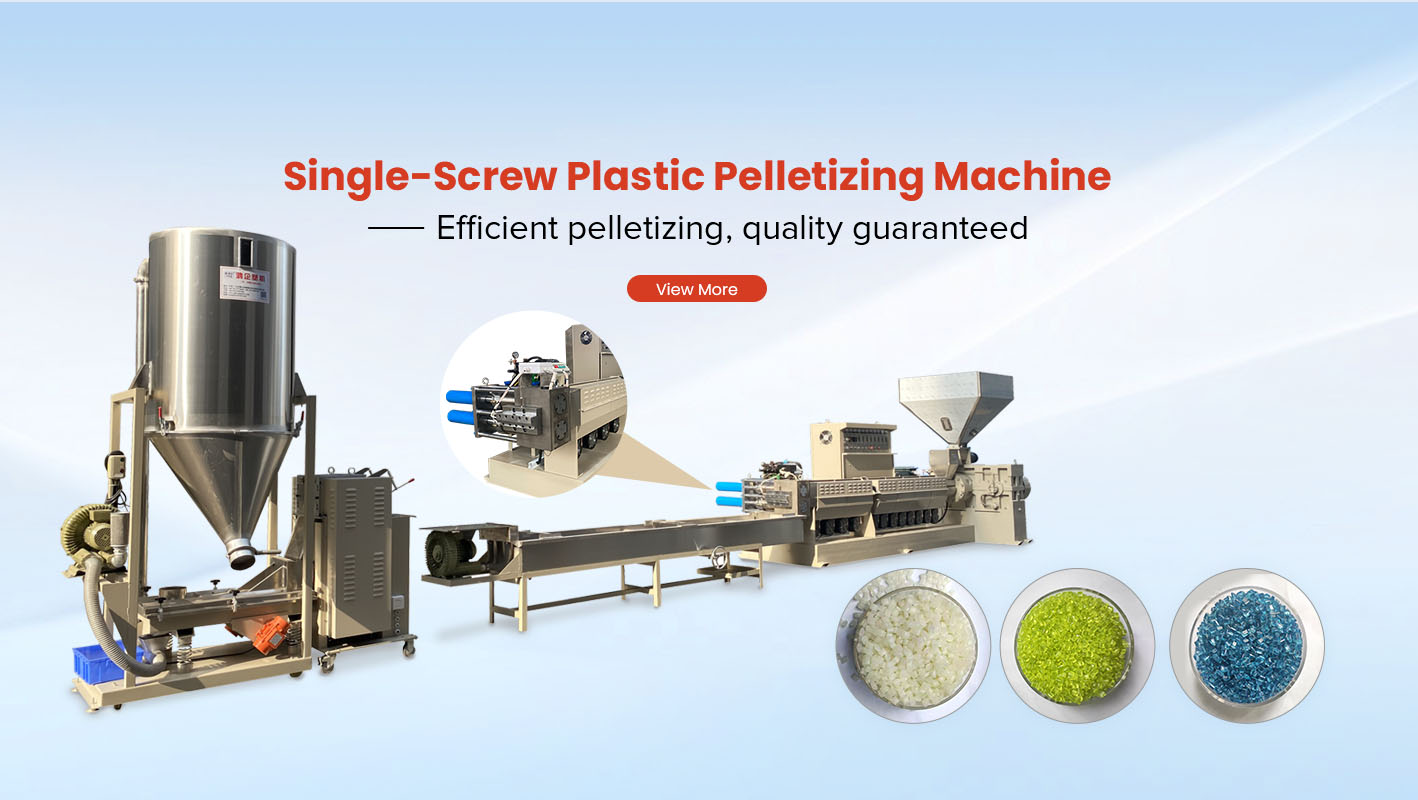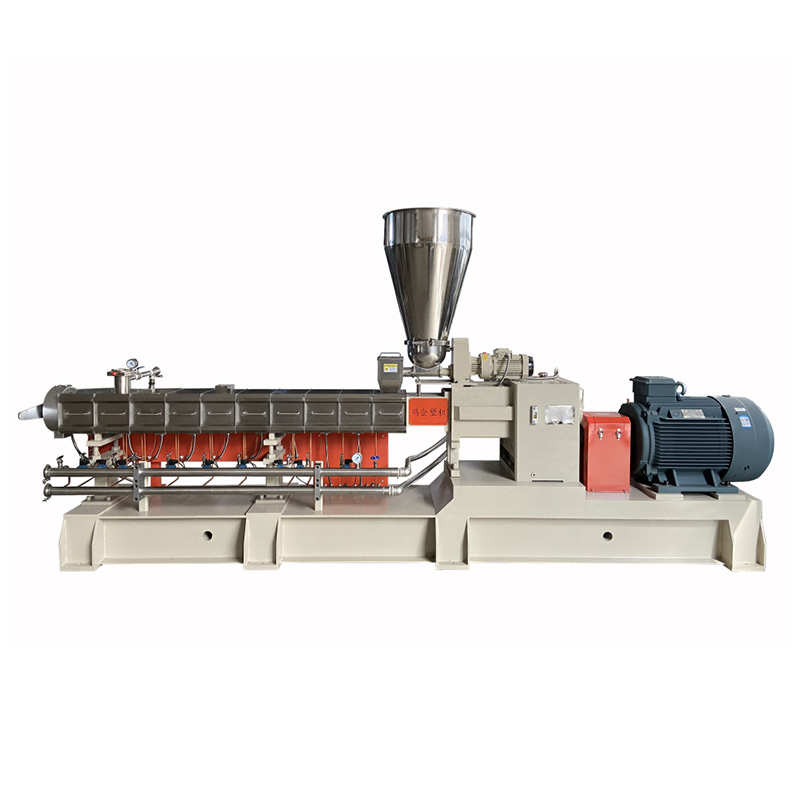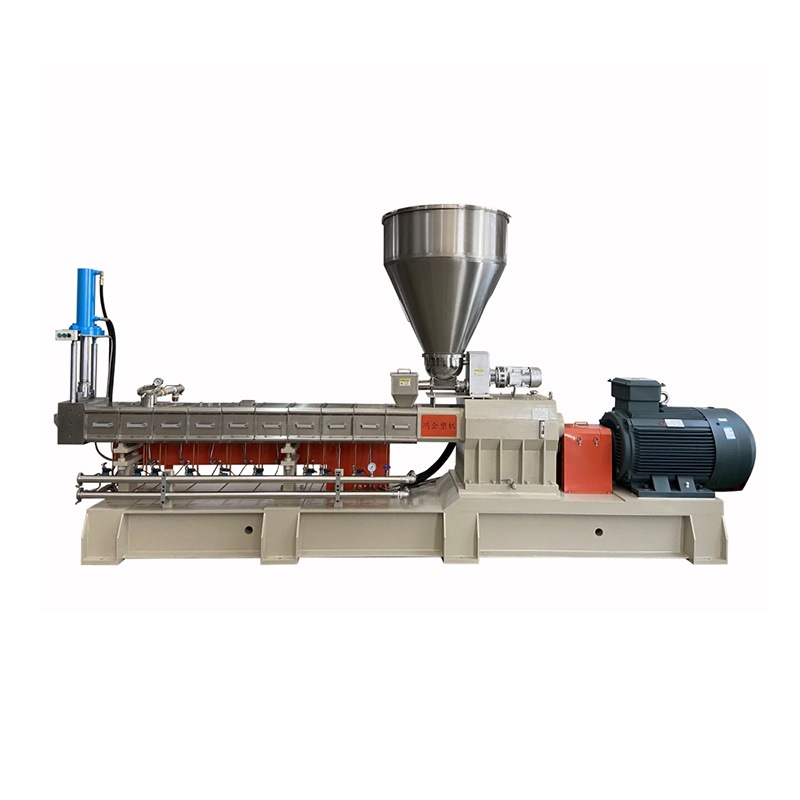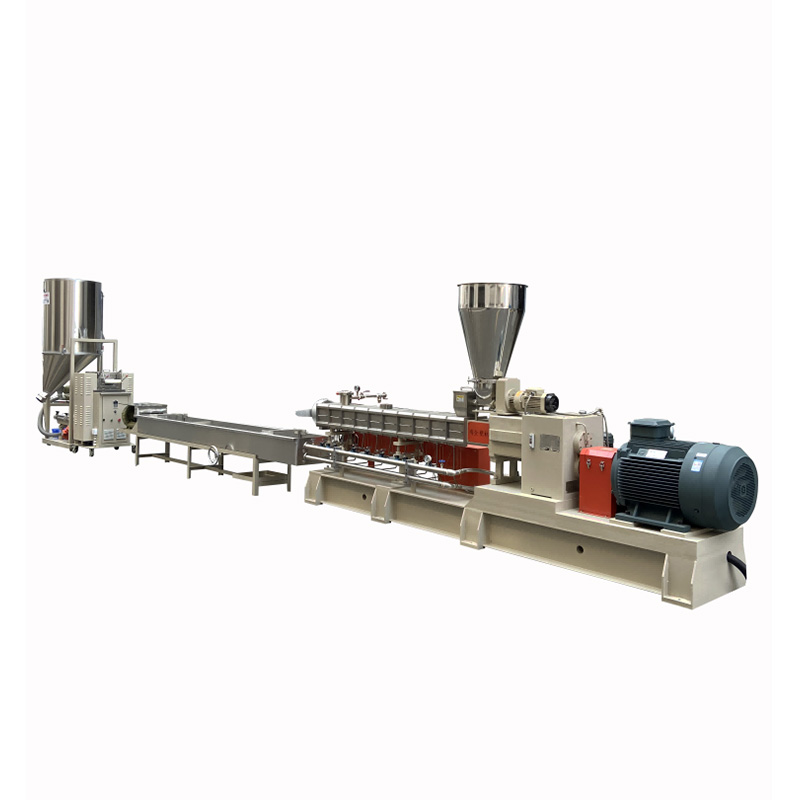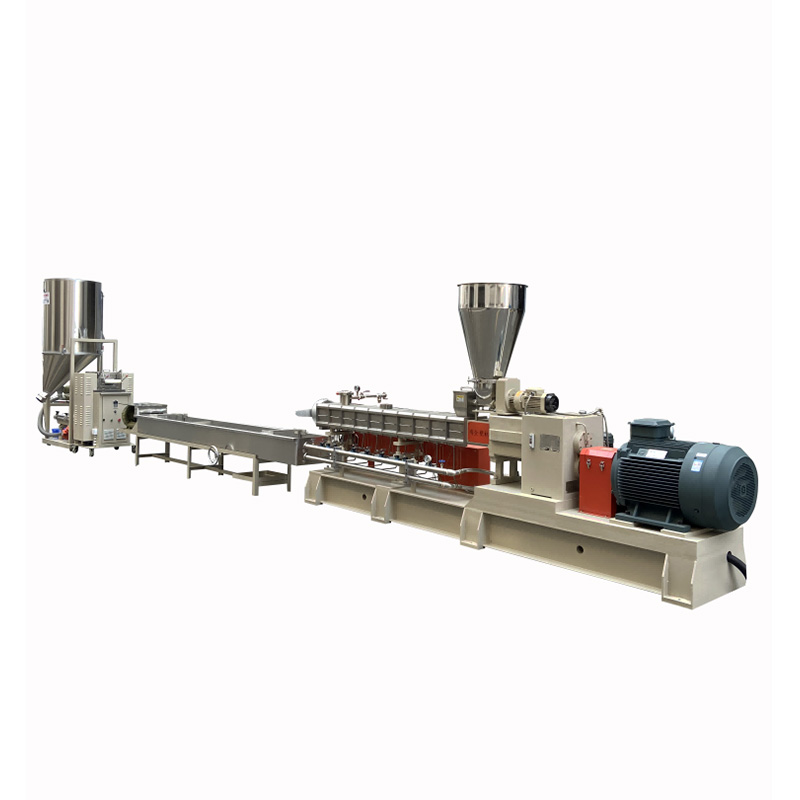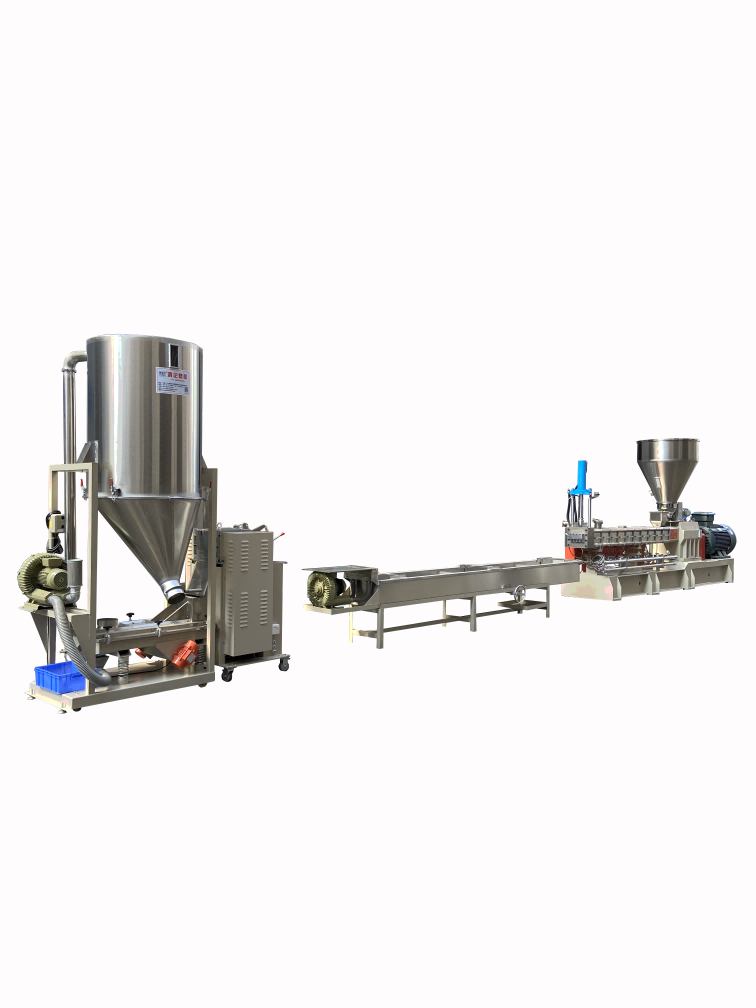Twin Screw Plastic Recycling Extruder
Temperature Control: 10-zone system with Omron controllers;
Main Motor Power: 160KW (Global brand)
- Product Information
The plastic recycling Extruder is an advanced plastic recycling and pelletizing equipment featuring a twin-screw design. It efficiently processes a variety of plastic materials, including engineering plastics, reinforced composites, thermoplastic elastomers (TPE/TPU), and recycled plastics. Through precise temperature control and powerful mixing capabilities, the equipment ensures thorough melting, mixing, and homogenization of plastics during the extrusion process, ultimately producing high-quality plastic pellets. Its efficient production capacity and stable performance can meet the needs of large-scale industrial production. At the same time, its energy-saving characteristics and degree of automation also significantly reduce users' production costs and manual intervention.
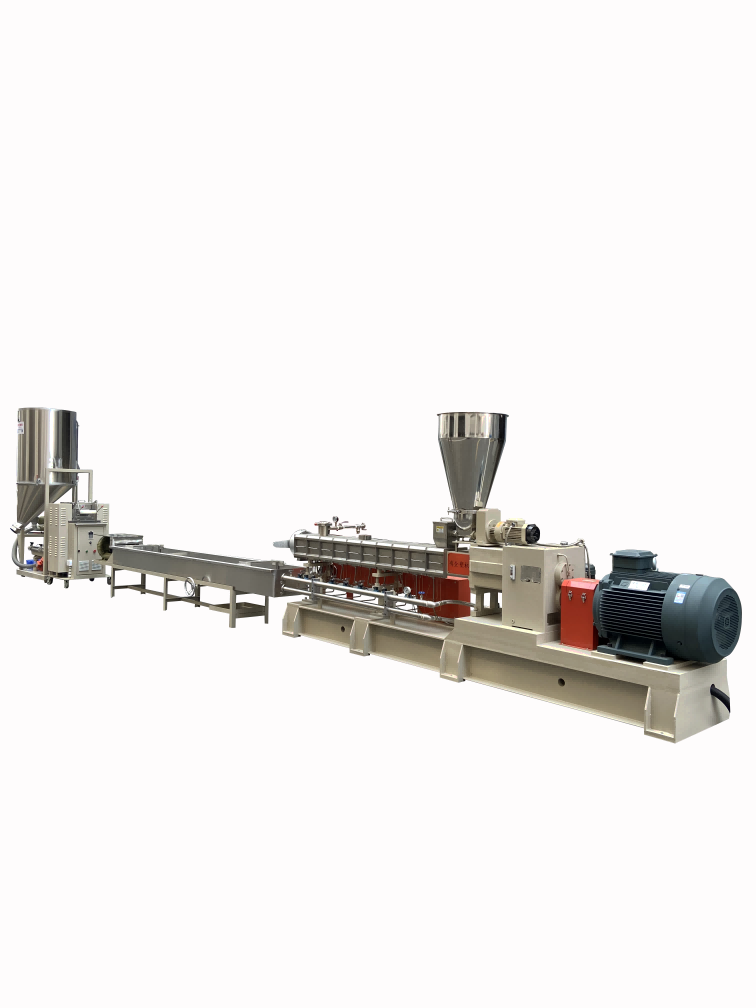
plastic recycling extruder Infomations:
| Model: | HQ-75B |
| Warranty: | 1 Year |
| Port: | Nansha, China |
| Screw: | Twin Screw |
| Terms Of Payment: | T/T |
| Average Lead Time: | 1-2 Months |
| Screen Changer: | Hydraulic Pressure |
| International Commercial Terms (Incoterms): | FOB, CFR, CIF, EXW |
| Factory Nature: | China Manufacturers Suppliers Factory |
Plastic Recycling Extruder Parameters:
Model | Screw Diameter (mm) | Groove Deep(mm) | L/D Ratio | Max RPM( r/min) | Output (kg/hr) |
HQ-20 | 22 | 3.85 | 32/40 | 500 | 1.5-10 |
HQ-36 | 35 | 6 | 35/50 | 500 | 60-150 |
HQ-52B/C | 51 | 9 | 32/52 | 500/600 | 150-250 |
HQ-65B/C | 62 | 11 | 32/52 | 500/600 | 350-500 |
HQ-75B/C | 71 | 12 | 32/52 | 500/600 | 600-1000 |
HQ-95B/C | 92 | 14 | 32/52 | 500/800 | 1000-2000 |
Plastic Recycling Extruder Detailed Specifications:
Screw Diameter: Ø71mm, L/D ratio: 40
Temperature Control: 10-zone system with Omron controllers
Main Motor Power: 160KW (Global brand)
Vacuum System: 4KW vacuum unit for effective degassing
Cutting System: Equipped with SKD-11/tungsten steel rotary blades, with 28 blades driven by a 7.5KW motor with variable frequency control
Cooling System: 304# stainless steel cooling water tank with a 2.2KW suction motor; dimensions: 6000450295mm
Plastic Recycling Extruder Features:
High Capacity Range:
The Plastic Recycling Extruder offers a wide range of capacities to meet the needs of production scales of all sizes. For example, the HQ-75B model boasts an output capacity of 600-1000 kg/hr at a maximum speed of 500/600 rpm. Compared to traditional single-screw extruders, this increases capacity by approximately 30%-50%, making it particularly suitable for large-scale plastic recycling and production operations.
Twin-Screw Design:
This equipment utilizes an advanced twin-screw design with a screw diameter of 71 mm and an L/D ratio of 40. This design provides excellent mixing, homogenization, and processing capabilities. The twin screws can rotate in either co-rotating or counter-rotating directions, optimizing for different material and process requirements. Compared to single-screw extruders, twin-screw extruders offer approximately 40% higher mixing efficiency, ensuring thorough melting and mixing of plastic materials during extrusion, improving product quality and consistency.
Compatible with a Wide Range of Plastic Materials:
The Plastic Recycling Extruder can process a wide range of plastic materials, including engineering plastics, reinforced composites, thermoplastic elastomers (TPE/TPU), and recycled plastics. Its broad material adaptability enables the equipment to perform exceptionally well in diverse applications, achieving a recycling rate exceeding 95%.
Energy-Efficient Features:
The equipment utilizes a 160kW main motor and is equipped with a variable frequency control device to optimize energy consumption. Compared to traditional extruders, it offers significant energy savings, reducing energy consumption by approximately 25%-30%. During production, precise motor speed control and an energy recovery system ensure efficient production while minimizing energy waste and reducing production costs, meeting modern industrial requirements for energy conservation and environmental protection.
Precise Temperature Control:
The Plastic Recycling Extruder is equipped with a 10-zone temperature control system using an Omron controller, enabling precise management of temperature fluctuations during the extrusion process. During the production process, each temperature zone can be controlled with an accuracy of ±1°C, effectively preventing plastic degradation or property changes caused by temperature fluctuations. Compared to conventional temperature control systems, this system improves temperature control accuracy by approximately 70%, significantly enhancing product quality and stability.
Premium Construction and Durability:
This equipment utilizes high-quality 6542 steel screws and a fully alloy-coated barrel, ensuring durability and long-term reliability. These high-performance materials effectively resist wear and corrosion during plastic processing, extending the equipment's lifespan. Compared to extruders made of conventional materials, its service life is approximately 2-3 times longer, significantly reducing maintenance costs and replacement frequency.
Plastic Recycling Extruder Applications:
Plastic recycling and reuse:
Plastic recycling extruder plays a vital role in the field of plastic recycling and reuse. It can efficiently process various waste plastics, such as PET bottles, HDPE barrels, PP packaging bags, etc., into high-quality reusable particles through crushing, cleaning, melting and extrusion.
Engineering plastic modification:
In the field of engineering plastic modification, plastic recycling extruder plays an irreplaceable role. By adding various fillers, reinforcing fibers, flame retardants, plasticizers and other modifiers, plastic recycling extruders can change the original properties of engineering plastics, such as improving strength, hardness, wear resistance, impact resistance, etc., to meet the special needs of plastic products in different fields.
Masterbatch production:
Masterbatch is a concentrated pigment particle composed of pigment, carrier resin and additives, with excellent color brightness and dispersibility. In the production process of masterbatch, plastic recycling extruder plays a key role. It can fully mix the pigment and carrier resin, and evenly disperse the pigment in the carrier resin through high-temperature melting and extrusion process to form masterbatch.
Thermoplastic Elastomer (TPE/TPU) Processing:
Thermoplastic elastomer (TPE/TPU) is a new type of plastic material with rubber-like elasticity and plastic processing performance. In the field of TPE/TPU processing, plastic recycling extruders can produce soft and durable plastic products.
Mixing of highly filled materials:
When preparing highly filled materials, plastic recycling extruders can evenly disperse a high proportion of fillers (such as calcium carbonate, talcum powder, wollastonite, etc.) into plastics to ensure product stability and consistency. These fillers can not only improve the strength and hardness of plastic products, but also reduce production costs and density. At the same time, plastic recycling extruders can also achieve blending and modification of different types of fillers by adjusting process parameters and formula design, and develop new highly filled materials with special properties.
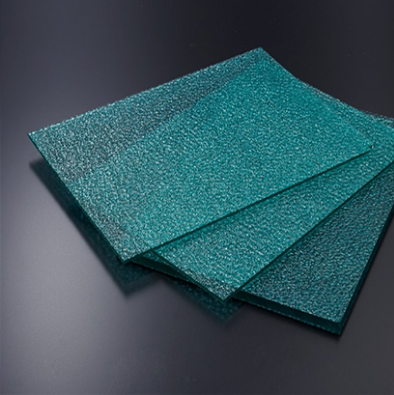
Plastic Recycling Extruder Types:
Co-Rotating Twin Screw Extruder:
Both screws rotate in the same direction, offering efficient mixing and homogenization. Ideal for compounding, masterbatch production, and processing thermoplastic elastomers.
Counter-Rotating Twin Screw Extruder:
Screws rotate in opposite directions, providing gentle mixing, suitable for processing materials like PVC.
Intermeshing Twin Screw Extruder:
Screws engage with each other, enhancing mixing and shearing, perfect for high-viscosity materials and complex formulations.
Non-Intermeshing Twin Screw Extruder:
Screws operate independently, providing lower shear, ideal for applications requiring minimal material stress.
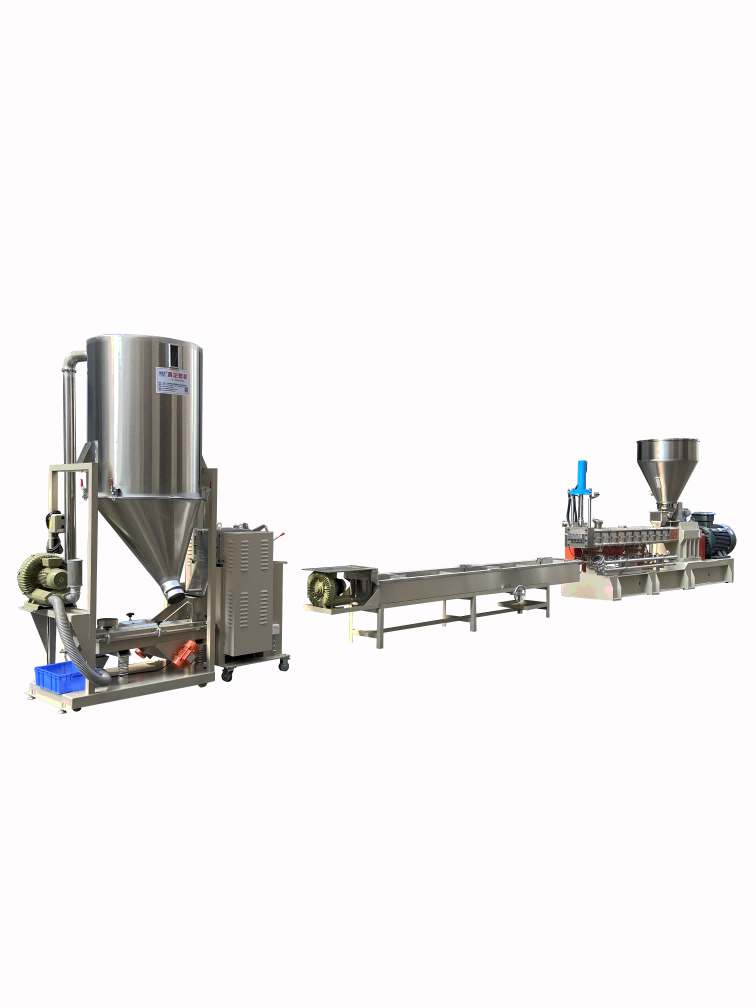
Plastic Recycling Extruder Maintenance:
Regular Inspection and Maintenance:
Regular, comprehensive inspection and maintenance of the Plastic Recycling Extruder is crucial to ensuring long-term, stable operation. Inspections should include the wear and operating status of key components such as the screw, barrel, die, motor, and reducer. Routine inspections are recommended every 200 hours, and comprehensive maintenance is recommended every 1000 hours. If the screw or barrel is found to be worn more than 0.5mm during inspection, it should be repaired or replaced promptly.
Cleaning and Maintenance:
Maintaining equipment cleanliness is an essential component of maintenance. During production, plastic residue and dust should be regularly removed from the equipment surface to prevent accumulation that could affect heat dissipation and operating performance. When cleaning the screw and barrel, use specialized cleaning tools and solvents to thoroughly remove plastic deposits. Ultrasonic cleaning can be used for deep cleaning of difficult-to-reach areas.
Lubrication and Oiling:
Maintaining proper lubrication of the equipment is crucial for proper operation. Regularly lubricate and oil the equipment's moving parts, such as bearings, gears, and screws. Use high-quality grease and follow the manufacturer's recommended cycle and dosage. During lubrication, thoroughly clean the lubrication areas to prevent impurities from entering and causing poor lubrication.
Vacuum System Maintenance:
The vacuum system of the Plastic Recycling Extruder plays a vital role in ensuring product quality. Regularly check the vacuum pump's sealing and operating performance to ensure it can provide a stable vacuum level. It is recommended to check the vacuum pump's oil level and quality every 150 hours and replace the vacuum pump oil every 500 hours. During production, closely monitor changes in vacuum levels. If a drop in vacuum is detected, immediately shut down the machine for inspection and repair.
Cutting System Maintenance:
The cutting system is a critical component of the Plastic Recycling Extruder, and its condition directly affects the dimensional accuracy and appearance of the product. Regularly check the wear and sharpness of the cutting blades and replace worn blades promptly. Also, inspect the cutting system's drive motor and transmission to ensure smooth and precise operation. We recommend a routine inspection of the cutting system every 100 hours and a comprehensive maintenance every 500 hours.
Cooling System Maintenance:
The cooling system of the Plastic Recycling Extruder is crucial for stable equipment operation and product quality. Regularly inspect the cooling system's pumps, piping, radiators, and other components to ensure the cooling water flow and temperature meet process requirements. We recommend checking the cooling system's water quality and pressure every 100 hours and cleaning the cooling system's filters and radiators every 300 hours.
Plastic Recycling Extruder FAQs:
What industries use Plastic Recycling Extruders?
Industries such as plastics manufacturing, recycling, chemical processing, pharmaceuticals, and food production commonly use twin screw pelletizing machines. The Plastic Recycling Extruder’s flexibility allows it to be applied in various sectors requiring precise pelletization.
How to maintain a Plastic Recycling Extruder?
Regular maintenance includes inspecting the screws, die, and heating elements, as well as lubricating moving parts. Keeping the Plastic Recycling Extruder clean and ensuring proper alignment of the screws will extend its life and maintain efficiency.
What are the different types of Plastic Recycling Extruders?
There are various types, such as co-rotating and counter-rotating twin screw machines. Co-rotating models are better for high-shear mixing, while counter-rotating ones are suited for low-shear processes, allowing for tailored production based on material needs.
What is the capacity of a Plastic Recycling Extruder?
The capacity of a Plastic Recycling Extruder can vary widely depending on the model. It typically ranges from 50 kg/hour to over 1000 kg/hour, making it suitable for both small-scale operations and large industrial production lines.


